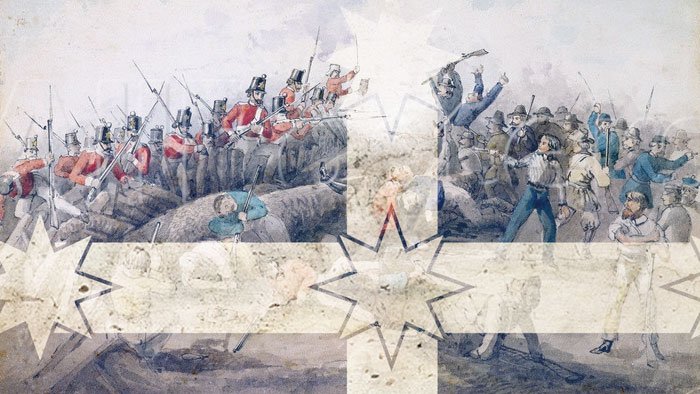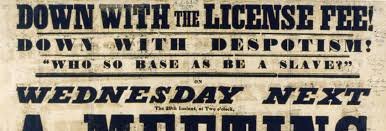
The year was 1854. Victorian Gold Fields. Australia
In the small town of Ballarat, a group of gold miners ("Diggers") revolted against the authority of the United Kingdom. The Battle of the Eureka Stockade, was waged between miners and the colonial forces of Australia on 3 December 1854 at Eureka Lead, so named for the stockade erected by the diggers during the conflict. The rebellion resulted in the deaths of no less than 27 people, most of them rebels.
The rebellion was sparked by a protracted period of civil disobedience in the Ballarat area during the Victorian gold rush, with miners protesting the expense of a miner's licence, taxation via the licence "without representation" and the actions of the government and the police and military.

"The local rebellion grew from a Ballarat Reform League movement and culminated in the erection by the rebels of a crude battlement and a swift and deadly siege by colonial forces."[1]
The rebels were placed on trial in Melbourne, spurring public outrage and massive support for the miners, resulting in the introduction of the Electoral Act 1856, which "mandated full white men's suffrage for elections for the lower house in the Victorian parliament". [2] As such, the Eureka Rebellion arguably birthed democracy in Australia and is interpreted by some as a political revolt.
To others, it is remembered as a shining moment in Australian History where the people stood up to the greed of the government to defend their God-given right to justice and a 'Fair go".
The words of the rebellion's leader, Peter Lalor still resonate loud and clear with all who hold their freedom dear:
"We swear by the Southern Cross to stand truly by each other, and fight to defend our rights and liberties"